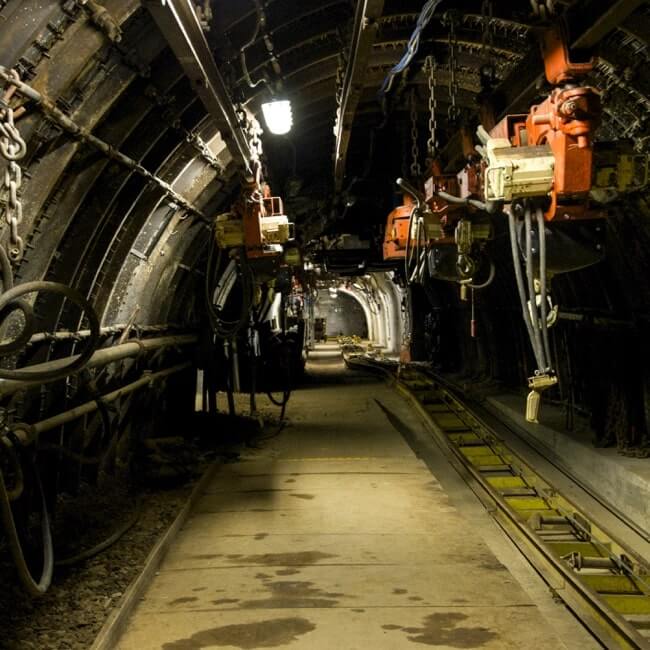Cabei ready to jump on nearshoring bandwagon in Central America

In December, Costa Rican Gisela Sánchez was sworn in as the new president of the Central American Bank for Economic Integration (Cabei), for a period of five years.
BNamericas sought her out to talk about the plans she has to address phenomena such as nearshoring and the challenges facing the institution, which was questioned during the last administration for the loans granted to the Nicaraguan dictatorship of Daniel Ortega.
BNamericas: How did you find Cabei when you took over?
Sánchez: In general, with many opportunities and strengths. I would also tell you that like any organization I find opportunities for improvement, to be more efficient in the use of resources, offer the best conditions for the countries we serve, maximize the impact we have in the countries, focus more on operational excellence, on digital transformation, etc.
This analysis allowed me to focus on two short-term priorities and another that also includes the long term. The two short-term issues have been that of transparency and accountability – how we can strengthen and demonstrate that the bank acts under the highest standards of integrity and compliance.
And in that sense, we’ve taken actions to strengthen it. A few weeks ago, in January, we approved a new anti-corruption policy. We also made an alliance with the United Nations High Commissioner for Human Rights.
And we’re in a process, in fact, of joining some transparency entities, such as the International Aid Transparency Initiative, the Publish What You Fund, etc.
The second thing has to do with efficiency. We did an evaluation before the approval of the 2024 budget and we managed to approve a budget that was 18% lower than the original plan and 8% lower than last year's budget, with which we want to demonstrate that the bank can work in an austere way.
The third pillar has two aspects. Firstly, how can we maximize the impact we have in the member countries?
And the good news is that we’ve just begun the strategic planning process to design Cabei's strategy for the next five years.
And the other component, which goes hand in hand with this, is a process of comprehensive reform of the bank's governance: How can we strengthen it for this next stage that we’re going to begin and that will allow us to better serve the 15 [member] countries?
Because in reality we not only have the responsibility of serving the Central American countries, but all member countries.
BNamericas: When would this planning be ready?
Sánchez: We hope to have a first draft by June of this year.
BNamericas: How much does the nearshoring phenomenon weigh in the region? How do you see it from the bank's perspective?
Sánchez: I see it as a tremendous opportunity that’s already being materialized, for example, in Mexico, but we’re just seeing the tip of the iceberg. Perhaps with a little more depth in a country like Costa Rica, which is bringing in a lot of investment for medical devices, the health sector in general. But still, as I say, we’re only seeing the tip of the iceberg in the rest of the region, in countries that can attract much more foreign direct investment through this invitation that the United States makes for companies that are located, especially in Asia, to get closer to their market. And we in Central America have a privileged geographical position.
It's an issue on which we’re going to work a lot as part of the new strategy. The other issue that’s vital is how to move forward and address the issue of migration, and we want to do it from a proactive perspective, that is, how not to lose talent. Another fundamental issue moving forward will have to do with deepening the ESG, the environmental, social and governance elements in our emissions, in our investments, in general, and in our portfolio. How can we give much more environmental and social impact to infrastructure, energy, or any other type of initiatives that we have in the portfolio.
BNamericas: Speaking about the region in general, many Central American countries are quite indebted. What do you consider to be the ideal financing vehicles for this type of situation?
Sánchez: It varies from country to country. One of the things that’s a priority for me is to be able to get closer to each of the governments and to be a catalyst and a helping hand that accompanies them in their improvement plans. So it varies a lot.
For example, Guatemala is a country that has very solid macroeconomic conditions. There we would rather like to be able to motivate them more to invest with Cabei in projects, whether infrastructure, social impact, environmental impact, etc.
The same happens with a country like Costa Rica, which has a smaller participation in the portfolio, or countries like Panama, where we have the opportunity to go deeper and do more projects. If we think about a country like Honduras, I think we have to better understand where we can add more value, in the type of initiatives they have on their roadmap.
We can add more value, but so can other multilateral banks because the challenges of Central America are so great that it’s impossible to think that only one financial institution or a single player can have all the solutions. In the case of El Salvador, the country has a few more challenges in macroeconomic matters and so we’re talking with them to see how we can accompany the processes that they’re already planning to significantly improve and reduce debt levels to be able to have better access to financial markets. Anyway, as I say, it varies from country to country.
BNamericas: You mention that it’s a bit difficult to generalize, but how would you summarize the macroeconomic vision you have of Central America?
Sánchez: I like to be positive. So, from a general perspective of the region we have interesting things: a growth expectation for the Central American economies, which is even a little higher than that of Latin America [in general], and in turn Latin America is higher than the global growth expectation.
Global growth of 2.9% is expected, but for Central America the expected growth is 3.8%.
I believe that the issue of nearshoring will allow us to bring much more growth and prosperity to the region in the next three to five years.
Obviously, everything must come accompanied by more fiscal discipline, which is one of the challenges we have. We must try to reduce the high cost of living.
Hopefully, opportunities can be built to attract investment, so there are more SMEs, and so these SMEs can grow.
Then we have the challenge of large-scale migration, which is definitely big.
There is an erosion of social contracts. So, we need more social cohesion and more sustainability in the public finances of the countries. At a global level, there is the geopolitical tension both because of the Russia-Ukraine situation and Israel-Gaza. There are many expectations of a reduction in interest rates and how the markets are going to move.
That's just looking at the economic perspective. If we add environmental challenges, we’re in Central America, in one of the regions that will be most impacted by climate change. We have to look for opportunities. I believe that there are many and I hope that Cabei will be very proactive in the coming years in finding more opportunities for carbon capture, and that a carbon market can be generated in the region; that Costa Rica, for example, is already taking advantage of. And to take advantage of Central America as a region, as a bloc, that can sell very well in the rest of the world.
BNamericas: During the previous presidency there was a lot of emphasis on giving loans to extra-regional countries, such as Argentina, Colombia, etc. Will you follow this policy?
Sánchez: I would tell you that, beyond choosing one country or another, what is a commitment for my period as president of the bank is to diversify our portfolio and be able to ensure that we have a healthy and robust portfolio, which provides a good economic balance, and that we don’t put ourselves at risk.
So, in that sense, I think we still have opportunities to bet more on some countries in the region whose participation in the portfolio is not as large as we would like. I give you the specific example of Guatemala and Costa Rica, which being Central American countries still represent a percentage, let's say, with great opportunity for growth, specifically Costa Rica that represents around 10% of our public sector loan portfolio and Guatemala 5%. So we could take it to levels of 15%. Panama is another country in which we still have the opportunity to grow, the Dominican Republic not so much since we’re at the expected levels.
Argentina is also at those levels. Maybe Colombia could have a little bit of growth but, overall, more important than addressing Central America versus the rest of Latin America, for me what is most relevant is ensuring that we have very good portfolio diversification and diversification that supports potential improvement of our risk rating and that allows us to serve the countries in the best possible way.
BNamericas: I can't help but ask you about an issue that caused a bit of controversy during the last presidency, which is the loans for Nicaragua. What would be your opinion about them?
Sánchez: I believe that our responsibility is to act with the greatest technical rigor. In the end we’re a bank, not a political institution but a financial and development institution. So, while it’s true we have to continue supporting all the countries in the region, when we see the possibilities based on the diversification of the current portfolio, Nicaragua is one of those that presents us with the most challenges to be able to grow in terms of access to Cabei capital.
So, my commitment is that obviously we have to continue supporting it, it’s a member country, it’s a founding country of the bank, but we have to do it in the most responsible way possible, adjusting to the established limits and working with the greatest technical rigor to ensure good use of resources in all countries.
BNamericas: You mentioned a while ago the priorities on which planning will be based, but I would like to know if there are specific priority projects.
Sánchez: This planning process will allow us to better focus on which sectors we could put more emphasis on, which growth opportunities for countries we could support more. The best example is nearshoring, where we have to understand where the opportunity is for each of them, the countries and how we can support them, if what they require is to work on energy issues, which is the case of Honduras, or if more infrastructure is needed, which is the case in Costa Rica, for nearshoring growth – which sectors are going to be the most attractive for companies.
Subscribe to the leading business intelligence platform in Latin America with different tools for Providers, Contractors, Operators, Government, Legal, Financial and Insurance industries.
News in: Political Risk & Macro

How Trump's policies could change the LatAm mining industry
BNamericas talks with Jorge Cantallops, director of copper think tank Cesco, about tariffs, the global energy transition and impacts on the mining ...

Trading partners or strategic pawns? Latin America's place in US-China tensions
While Trump has seemingly prioritized migration policies in his first few days back in the White House, the region continues to play a vital role f...
Subscribe to Latin America’s most trusted business intelligence platform.
Other projects
Get key information on thousands of projects in Latin America, from current stage, to capex, related companies, key contacts and more.
- Project: H2U Offshore
- Current stage:

- Updated:
12 hours ago
- Project: Block LLA 78
- Current stage:

- Updated:
13 hours ago
- Project: Block SN 26
- Current stage:

- Updated:
13 hours ago
- Project: Block LLA 104
- Current stage:

- Updated:
13 hours ago
- Project: Castanheira hydroelectric plant
- Current stage:

- Updated:
12 hours ago
- Project: Oro y Cielo solar photovoltaic plant
- Current stage:

- Updated:
11 hours ago
- Project: Pedro de Valdivia solar photovoltaic park
- Current stage:

- Updated:
11 hours ago
- Project: ALWA photovoltaic solar plant
- Current stage:

- Updated:
12 hours ago
- Project: Carare photovoltaic park
- Current stage:

- Updated:
12 hours ago
- Project: Falchani (Phase 1)
- Current stage:

- Updated:
10 hours ago
Other companies
Get key information on thousands of companies in Latin America, from projects, to contacts, shareholders, related news and more.
- Company: Southern Cross Group
-
Established in 1998, Southern Cross Group is a private equity fund which covers various sectors in the Latin American market. The company's investments include Chilean company G...
- Company: Río Seco S.A. (Río Seco)
-
Río Seco S.A., an association between Latin American private equity fund Southern Cross Group and Singapore's Sembcorp Industries Ltd., is developing the 350MW Pacífico thermoel...
- Company: Hidroquest S.A. (Hidroquest)
- Company: Sunresin New Materials Co. Ltd. (Sunresin New Materials)
-
The description contained in this profile was extracted directly from an official source and has not been edited or modified by BNamericas researchers, but may have been machine...
- Company: Ibirapitanga Solucoes em Tecnologia Ltda (Ibsol Energy)
-
The description contained in this profile was extracted directly from an official source and has not been edited or modified by BNamericas researchers, but may have been machine...



